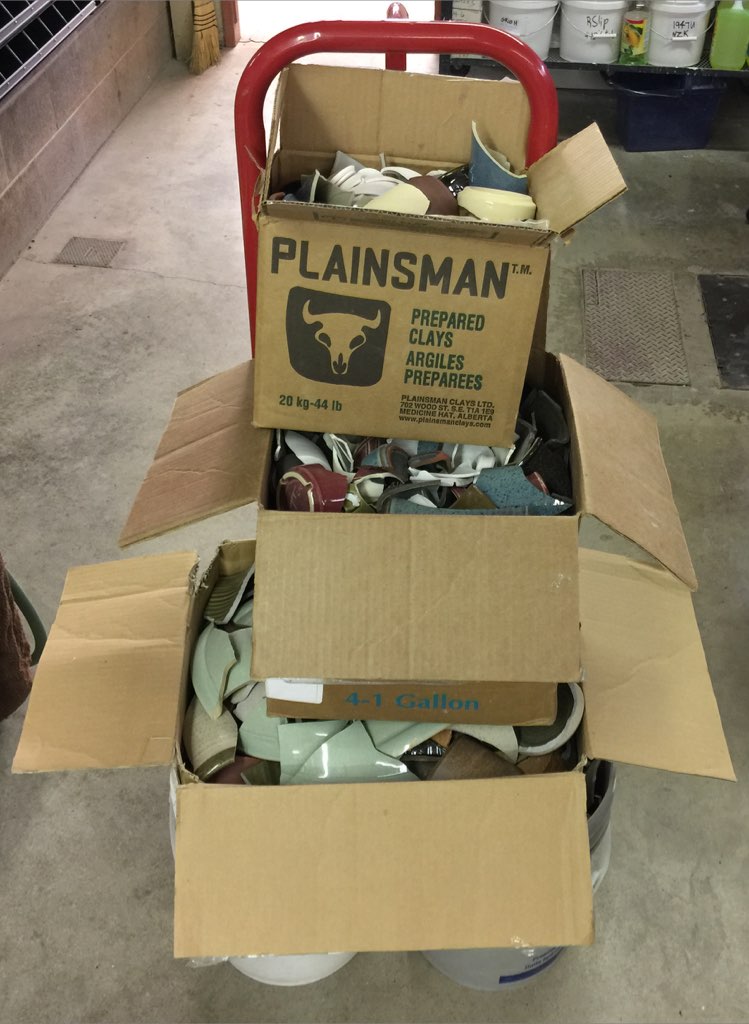Smash Pots to Make Better Ones! Learn their dirty little secrets.
One dirty secret that a fracturing piece can tell you is: "I am weak, easily broken". I just filled two five-gallon pails and three boxes (I use a nylon hammer, and safety glasses, of course). Every type of clay and glaze I use. Every temperature. I started with a commercial Denby stoneware piece to get a feel for how quality ware should break. It becomes immediately evident which pieces are weak by the way they shatter (and how high a strength-bar commercial ware sets). Breaks with knife-like edges indicate strong body/glaze combos. Strong ware breaks into fewer pieces. Crazed ware is really weak. Ware with glaze compression (even if not insight-live.com/glossary/79">shivering) explodes on impact. Low-fire ware can be very strong when glazes fit (and even better when it is fired to cone 03 or 02). High-fire ware can be surprisingly weak (if not vitreous or glaze fit is poor). This is an example where individual potters can take responsibility for ware quality and learn when to avoid DIFM thinking.
Pages that reference this post in the Digitalfire Reference Library:
Fired Strength, Restaurant Ware, Do-It-Yourself

This post is one of thousands found in the Digitalfire Reference Database. Most are part of a timeline maintained by Tony Hansen. You can search that timeline on the home page of digitalfire.com.
